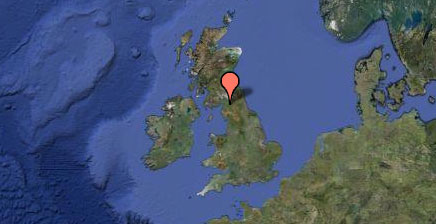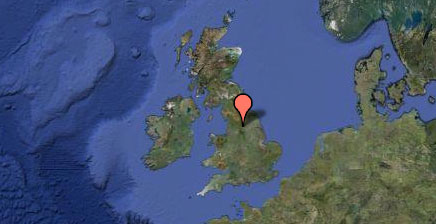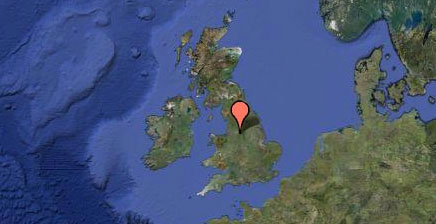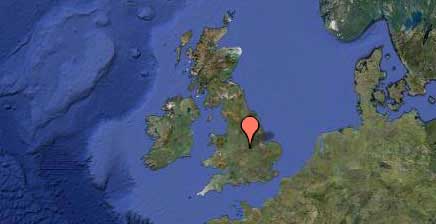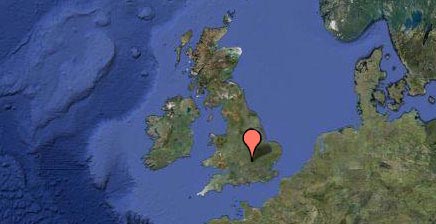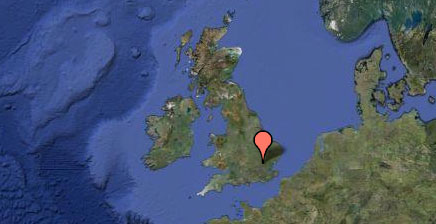CFA is proud to showcase our publications and publicly available articles.
Read on for more.
Exploring the Vulcan Foundry at Leith
By Dave McNicol
Check out the July/August 2023 Edition of History Scotland Magazine for an article on a foundry excavated by CFA in 2021. The article talks about the history and archaeology of the Vulcan Foundry in Leith, Edinburgh and the wider industrialisation of the area during the 19th century.
The article by CFA’s Dave McNicol can be found here – https://lnkd.in/eMgs3yhc


Excavation of a Pit Alignment at Land Adjacent to Orchardfield, East Linton, East Lothian
by Gary Savory and CFA Archaeology
Available at: https://www.euppublishing.com/doi/10.3366/saj.2023.0182
The remains of a pit alignment were excavated to the east of Orchardfield, East Linton, East Lothian by CFA Archaeology Ltd during archaeological mitigation works ahead of a residential development. The excavation revealed an L-shaped alignment which consisted of 49 pits (27 north-south and 22 east-west) with a possible entrance through the east-west alignment. All of the pits in the alignment were either fully or partially excavated. A fragment of a tall D-sectioned cannel coal bangle, dated to the Iron Age, was recovered from one of the pits. Mid-Late Bronze Age pottery was recovered from an isolated pit which did not form part of the pit alignment.




Domestic and commercial cellars and a bread oven in 19th-century properties at Eyre Lane, Earl Street and Hallam Lane, Sheffield
By Mark Bell and Ian Suddaby
Contact the Hunter Archaeological Society for access, or get in touch with CFA directly through our social media channels, to receive a copy of this work.

This article details a programme of archaeological excavation which was undertaken at the site of the former Eon Works, a heat treatment steel works, located between Earl Street, Eyre Lane, and Hallam Lane, Sheffield. Excavations revealed the remains of a number of cellars within buildings built on the site dating from around 1822.
The excavation also uncovered the remains of a brick bakers’ oven at No. 2 Hallam Lane. It was built into the rear of a cellar at No. 2 Hallam Lane, within a courtyard that was surrounded by the Royal Hotel, the three storey properties on Earl Street, and shop buildings on the corner of Hallam Lane and Earl Street. The large size of the oven suggests that it may have originally been a commercial baker’s premises that fronted on to Hallam Lane, with the property at No. 59 Earl Street acting as the shop front.

Work at this site revealed insights into the working class history of the area. CFA’s researchers were able to discover some of the names and occupations of the area’s occupants, including a master shoemaker, a comb maker, labourers and joiners, and even a chandelier bronzer!
Many post-medieval finds were recovered, including an assemblage of clay pipes. One of these featured a masonic square and compass symbol (centre right).

Riddle’s Court, Lawnmarket, Edinburgh: a merchant’s house fit for a king
By Dr Mike Cressey with contributions by Anne Crone, Karen Dundas, Christina Hills and Alasdair Ross; January 2023
Available at: http://journals.socantscot.org/index.php/sair/issue/view/317

Riddle’s Court, a former merchant’s house situated off the Royal Mile, Lawnmarket, Edinburgh, underwent major refurbishment and transformation into the Patrick Geddes Centre for Learning from 2015 to 2017. The results from historical research, building survey and architectural watching briefs are as yet unparalleled, as no other building on the Royal Mile has received the level of historical and archaeological research carried out at Riddle’s Court.

In the late 16th century much of the Royal Mile was a plethora of mainly stone and timber-framed houses. However, Riddle’s Court was an amalgam of predominantly ashlar and rubble construction with tall thatched roofs with dormer windows. Slate was a later addition in the early 18th century. The interior of the complex was furnished with several turnpike staircases of which only one now survives. During the 17th and 18th centuries Riddle’s Court was bedecked with all the fine trappings of a country mansion house and was occupied by major and minor aristocracy until the late 18th century. The status of the building was further elevated by its earlier royal connections that led to its partial remodelling for ceremonial purposes. A legacy of a lavish royal banquet in honour of King James VI of Scotland (James I of England) and his bride Queen Anne of Denmark was a painted ceiling in the so-called ‘King’s Chamber’ which commemorated their royal union. This ornate and historically significant painted beam and board ceiling was discovered in the 1960s during a period of building renovation by Edinburgh City Council.
The ceiling was restored a nd is a focal point among a large collection of ornate plaster and painted ceilings. Subsequent removal of more modern lined ceilings during the present refurbishment led to the discovery of three more painted beam and board ceilings, and a concealed fireplace and bread oven that are rare survivors within not only the Royal Mile but elsewhere in Scotland. The presence of so much hitherto unrecorded artwork has significantly raised the importance of the Court’s North Block.
nd is a focal point among a large collection of ornate plaster and painted ceilings. Subsequent removal of more modern lined ceilings during the present refurbishment led to the discovery of three more painted beam and board ceilings, and a concealed fireplace and bread oven that are rare survivors within not only the Royal Mile but elsewhere in Scotland. The presence of so much hitherto unrecorded artwork has significantly raised the importance of the Court’s North Block.
Tuff, Flint, and Hazelnuts: Final Palaeolithic and Mesolithic Occupation at Netherhall Road, Maryport, Cumbria
By Ann Clarke and Magnus Kirby, with contributions by Diane Alldritt and Fraser Brown; August 2022
Available at: https://intarch.ac.uk/journal/issue59/4/full-text.html

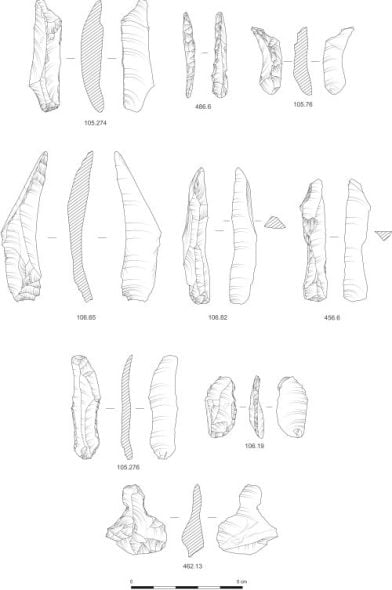
The article explores a Mesolithic flint assemblage discovered during our excavations at Maryport in Cumbria. Beneath a level of Romano-British activity, 37 cut features were identified with a quantity of lithics recovered. As most of the evidence for Mesolithic activity in the north of England has previously been centred on the Pennines, this find represents a significant discovery for Cumbria and the northwest region and greatly expands our knowledge of the Mesolithic period.

Clarke, A. and Kirby, M. (with Alldritt, D. and Brown F.) 2022 Tuff, Flint, and Hazelnuts: Final Palaeolithic and Mesolithic Occupation at Netherhall Road, Maryport, Cumbria, Internet Archaeology 59. https://doi.org/10.11141/ia.59.4
Dairying, diseases and the evolution of lactase persistence in Europe
Evershed, R.P., Davey Smith, G., Roffet-Salque, M. et al. Dairying, diseases and the evolution of lactase persistence in Europe. Nature 608, 336–345 (2022).
Available at: https://doi.org/10.1038/s41586-022-05010-7
CFA archaeology supplied some of the pottery samples used in this study, and our own Mel Johnson was a co-author on the final paper.
Summary from nature.com:
‘The dawn of dairy farming in Europe occurred thousands of years before most people evolved the ability to drink milk as adults without becoming ill. Now researchers think they know why: lactose tolerance was beneficial enough to influence evolution only during occasional episodes of famine and disease, explaining why it took thousands of years for the trait to become widespread1.
The theory — backed up by an analysis of thousands of pottery shards and hundreds of ancient human genomes as well as sophisticated modelling — explains how the ability to digest milk became so common in modern Europeans, despite being almost non-existent in early dairy farmers. This ability, known as lactase persistence, comes from an enzyme that breaks down milk sugar and usually shuts down after young children are weaned.
The study, published in Nature on 27 July, is the first major effort to quantify the forces that have shaped this trait, says Shevan Wilkin, a molecular archaeologist at the University of Zurich, Switzerland. “Lactase-persistence evolution was much more complicated than we ever thought.”‘
Abstract: ‘In European and many African, Middle Eastern and southern Asian populations, lactase persistence (LP) is the most strongly selected monogenic trait to have evolved over the past 10,000 years1. Although the selection of LP and the consumption of prehistoric milk must be linked, considerable uncertainty remains concerning their spatiotemporal configuration and specific interactions2,3. Here we provide detailed distributions of milk exploitation across Europe over the past 9,000 years using around 7,000 pottery fat residues from more than 550 archaeological sites. European milk use was widespread from the Neolithic period onwards but varied spatially and temporally in intensity. Notably, LP selection varying with levels of prehistoric milk exploitation is no better at explaining LP allele frequency trajectories than uniform selection since the Neolithic period. In the UK Biobank4,5 cohort of 500,000 contemporary Europeans, LP genotype was only weakly associated with milk consumption and did not show consistent associations with improved fitness or health indicators. This suggests that other reasons for the beneficial effects of LP should be considered for its rapid frequency increase. We propose that lactase non-persistent individuals consumed milk when it became available but, under conditions of famine and/or increased pathogen exposure, this was disadvantageous, driving LP selection in prehistoric Europe. Comparison of model likelihoods indicates that population fluctuations, settlement density and wild animal exploitation—proxies for these drivers—provide better explanations of LP selection than the extent of milk exploitation. These findings offer new perspectives on prehistoric milk exploitation and LP evolution.’

